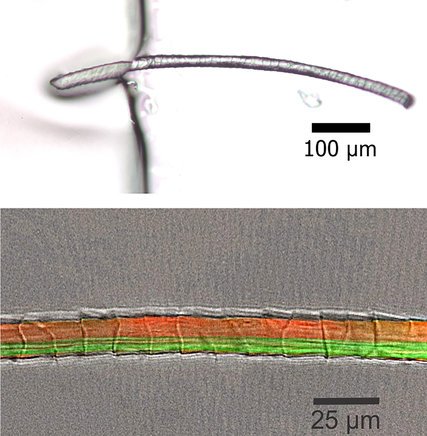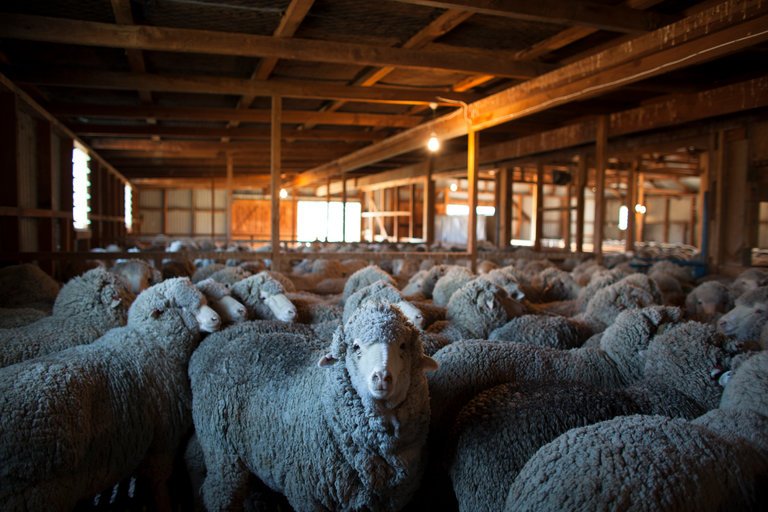What Makes Some Hair Curly? Not Quite What Scientists Thought
Every day is a curly hair day for sheep. Those curls and kinks are part of what makes woolen sweaters so cozy — the maze of fibers helps trap warm air, keeping it close to the body. But wrapped up in those curls may also be answers to a longstanding mystery: exactly how a strand of hair winds itself into a curl on the cellular level.
For many years, there were two competing theories to explain what makes hairs curl in sheep. Research by scientists in New Zealand and Japan published Thursday in the Journal of Experimental Biology finds that neither theory is exactly correct. But it remains likely that differences between certain cells on a hair may explain what makes a sheep’s wool curly. And while human hair has some crucial differences from wool, understanding why curls happen in one mammal’s hair could eventually shed light on others, including ours.
At first, the cells that will make up a strand of hair are soft and squishy, like little round bags of fluid. But as they grow longer and get extruded through a hair follicle, they get thinner, harder and full of keratin, a protein.
In human hairs, the cells end up winding around one another in complex tangles, which makes it difficult to draw conclusions about how they contribute to curl. So researchers led by Duane Harland, a scientist at AgResearch in New Zealand, clipped samples from six New Zealand merino sheep, whose wool cells are much more tidy.
Advertisement
Continue reading the main story
After washing the samples in ultrapure water, the researchers dried them on a vibrating platform, to make sure the fibers did not stick to each other, distorting their curves. Then, under a microscope, they measured the curvature of the individual hairs, counted the numbers of different cell types, and recorded the cells’ lengths.
Continue reading the main story
Advertisement
Continue reading the main story
They were testing two ideas about curliness. The first theory is that as a curling strand is constructed, the cells on one side divide more quickly than those on the other. This would generate a curve in the direction of the side with fewer cells. The other involves the differences between the two types of cells that make up wool fibers: orthocortical cells, which tend to be longer, and paracortical cells, which are shorter. In this theory, a certain proportion of longer cells to shorter cells, arranged on either side of the strand, generates a curl, with the ratio of the two defining the degree of curvature.

As they examined their strands, they found that there are not fewer cells on the inside of a curve than on the outside, which countered the first theory.
But when they tested the second theory, they found that simply knowing the ratio of long cells to short ones did not allow them to precisely predict a fiber’s curl.
“What we were not expecting was that neither was completely accurate in terms of prediction,” said Dr. Harland.
Newsletter Sign Up
Continue reading the main story
Please verify you're not a robot by clicking the box.
Invalid email address. Please re-enter.
You must select a newsletter to subscribe to.
Sign Up You agree to receive occasional updates and special offers for The New York Times's products and services.
Thank you for subscribing.
An error has occurred. Please try again later.
You are already subscribed to this email.
View all New York Times newsletters.
- See Sample
- Manage Email Preferences
- Not you?
- Privacy Policy
- Opt out or contact us anytime
That is because while orthocortical cells are longer than paracortical cells on average, in reality they each have a wide distribution of lengths. And there is some overlap between them: A long paracortical cell could be longer than a short orthocortical cell. This variation means it isn’t possible to make a direct connection between the number of each cell type and how much curl there is that holds for all strands, Dr. Harland said. You could not say that having 60 percent orthocortical cells and 40 percent paracortical cells will always lead to a 15-degree curve, for instance.
What they did find was that in any given strand, any orthocortical cell will always be longer than any paracortical. That reinforces the idea that the differences between them are linked to the curl.
The team’s findings may not map perfectly to our hair or that found on other mammals. But there is still quite a bit that we can learn by studying sheep’s wool.
“We take hair for granted,” said Dr. Harland, but it is an ancient adaptation, likely to have common developmental roots in the many creatures who sport it.
Like the Science Times page on Facebook. | Sign up for the Science Times newsletter.
Continue reading the main storyRead the Original Article






























